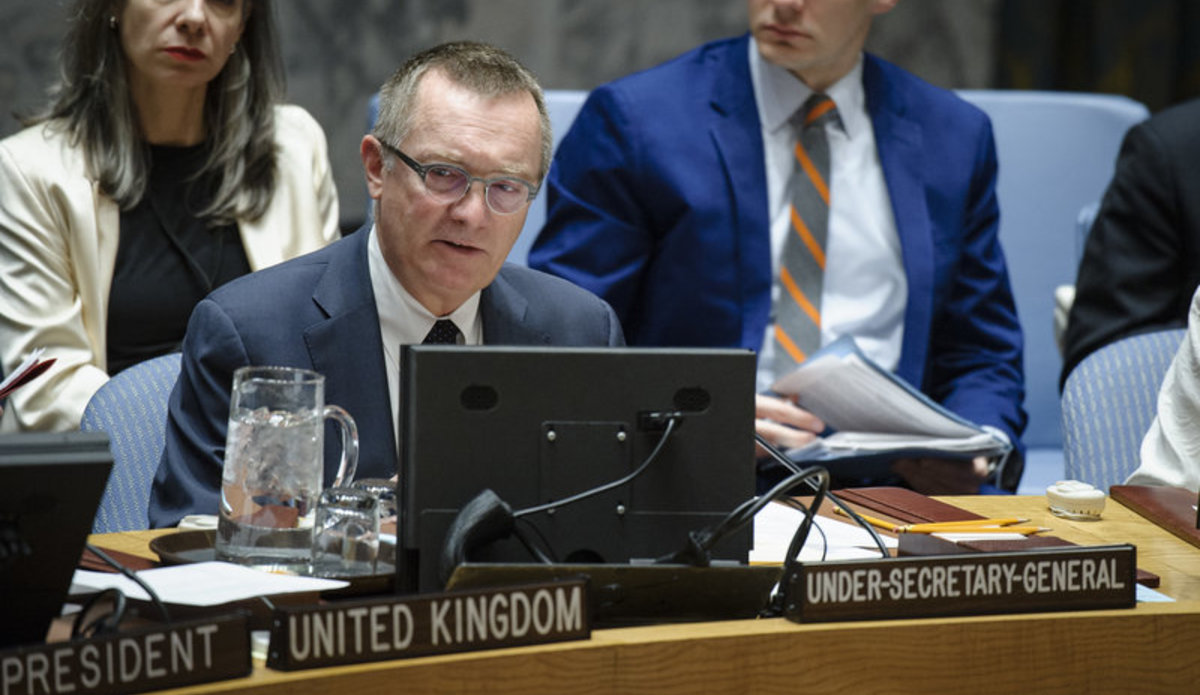Mr. President, Excellencies, Ladies and Gentlemen,
Thank you for the opportunity to brief on this important topic.
I would like to start by expressing my sincere condolences to the loved ones of the victims of Wednesday’s terrorist attack in London and my deep sympathy to the people and Government of the United Kingdom
We needed no reminder of the horror of terrorism. But the London attack -- like those in Kabul, Baghdad, Maiduguri and so many other places recently– must move us to strengthen international counter-terrorism cooperation in line with international human rights and humanitarian law standards
Mr. President,
Today, terrorists, particularly in armed conflict situations, are destroying lives but also visiting their horrific violence on historical sites and objects. Indeed, the deliberate destruction of cultural heritage and the trafficking in items of great artistic, religious or cultural significance target individuals and communities on cultural and religious grounds. The protection of heritage, then, is not only a cultural issue; it is also a security and humanitarian imperative.
Terrorist groups like ISIL exploit cultural sites to finance their activities while strengthening their linkages with transnational organized crime. And they destroy and traffic cultural heritage to undermine the power of culture as a bridge between generations, people of different backgrounds and religions.
Today’s resolution aims to strengthen international cooperation to deprive terrorists of funding, but also to protect cultural heritage as a symbol of understanding and respect for all religions, beliefs and civilizations.
Awareness of the essential importance of the protection of cultural heritage is not new, but it has grown considerably over the past several years. Creating MINUSMA’s mandate in 2013 through Resolution 2199, the Security Council established the link between the illicit trafficking of cultural objects and the financing of terrorism. Resolution 2322 (2016) urged States to bolster cooperation to prevent and combat trafficking in cultural property and related offences that benefit or may benefit terrorist groups.
Meanwhile, during the fifth review of the United Nations Global Counter-Terrorism Strategy, the General Assembly expressed concern in resolution 70/291 that terrorists may benefit from transnational organized crime in some regions, including from the trafficking of cultural property, and condemned the destruction of cultural heritage by terrorist groups.
In resolution 68/127, the General Assembly deplored “attacks on religious places and shrines and cultural sites in violation of international law, in particular human rights and humanitarian law”.
And there is already a strong international legal and normative framework to address these crimes. This is based on the United Nations Conventions against Transnational Organized Crime and Corruption; the International Convention for the Suppression of the Financing of Terrorism; and the International Guidelines for Crime Prevention and Criminal Justice Responses with Respect to Trafficking in Cultural Property and Other Related Offences.
Mr. President,
Protecting cultural heritage requires us to make every effort to implement this international legal and normative framework and strengthen international cooperation.
It also demands a global criminal justice response that can prevent trafficking in cultural property by disrupting organized criminal and terrorist networks, including through anti-corruption and anti-money-laundering action, and bringing perpetrators to justice.
We need to put a stronger focus on investigation, cross-border cooperation and exchange of information, and on bringing in private and public sector partners, including dealers and the tourism sector, to promote supply chain integrity and stop the illicit trade and sale of cultural property.
The United Nations system, particularly through the Counter-Terrorism Implementation Task Force (CTITF) entities, is increasingly supporting Member States efforts to address these threats through advocacy and capacity-building assistance.
For example, UNESCO and UNODC are already working together, along with INTERPOL, the World Customs Organization, and other partners, to assist Member States in protecting cultural heritage and countering the trafficking in cultural property.
As CTITF Chairman, and in light of this debate and the resolution that was adopted today, I will encourage the CTITF Inter-Agency Working Group on Countering the Financing of Terrorism to develop new projects to help Member States protect their cultural heritage.
Mr. President,
The United Nations, and the Security Council in particular, have demonstrated their determination to further integrate the protection of cultural heritage in their counter-terrorism work.
With the support of United Nations entities, Member States are strengthening their legal frameworks and criminal justice systems, and enhancing their collaboration to prevent and respond to terrorists’ attacks against their cultural heritage. I believe we can, and must, do even more.
This resolution provides a good basis to do just that. The United Nations stands ready to do its part.
Thank you, Mr. President.

